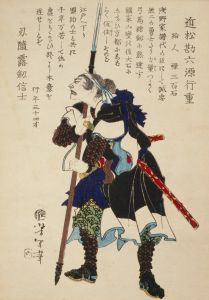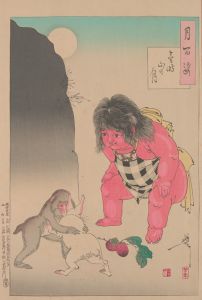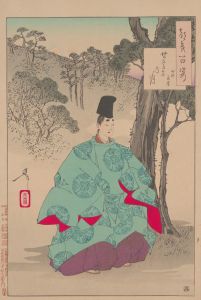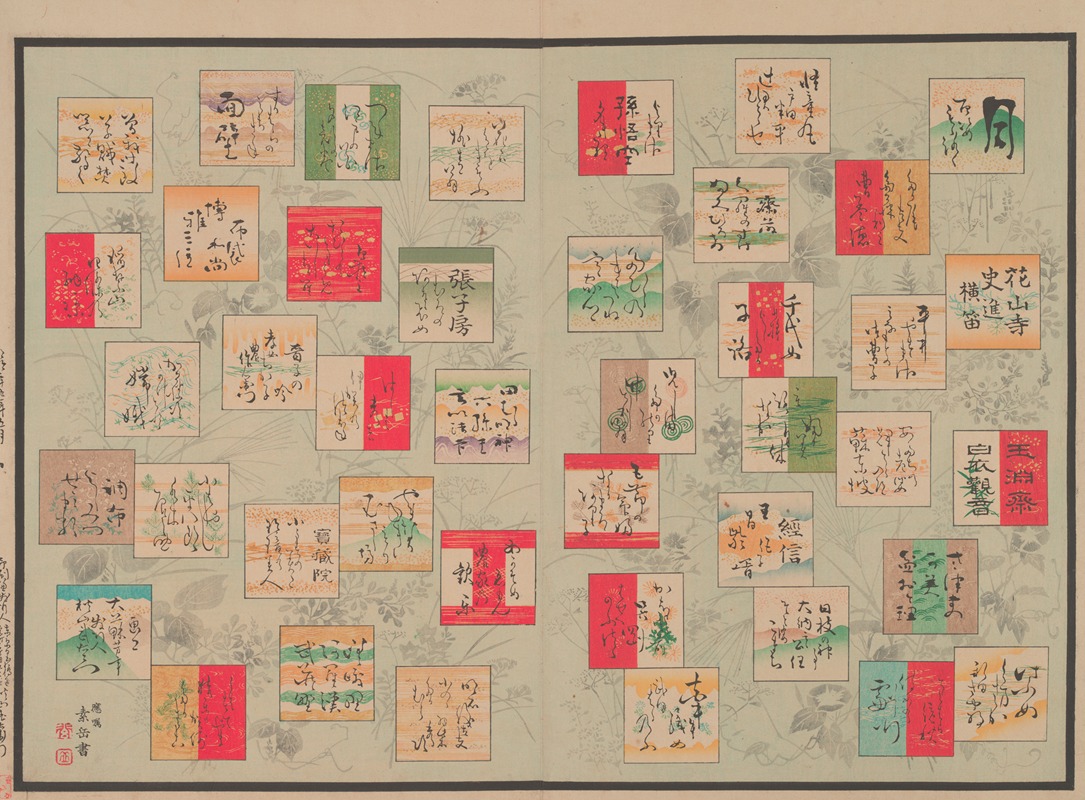
Tsuki no Hyakushi – Title page
A hand-painted replica of Tsukioka Yoshitoshi’s masterpiece Tsuki no Hyakushi – Title page, meticulously crafted by professional artists to capture the true essence of the original. Each piece is created with museum-quality canvas and rare mineral pigments, carefully painted by experienced artists with delicate brushstrokes and rich, layered colors to perfectly recreate the texture of the original artwork. Unlike machine-printed reproductions, this hand-painted version brings the painting to life, infused with the artist’s emotions and skill in every stroke. Whether for personal collection or home decoration, it instantly elevates the artistic atmosphere of any space.
Tsuki no Hyakushi – Title page by Tsukioka Yoshitoshi is a notable work by the renowned Japanese ukiyo-e artist Tsukioka Yoshitoshi. Yoshitoshi, born in 1839 and active during the late Edo and early Meiji periods, is celebrated for his innovative approach to traditional woodblock printing and his ability to capture the complexities of human emotion and historical narratives. His works often reflect the turbulent times of transition in Japan as it moved from feudal isolation to a more modernized society.
The title page of "Tsuki no Hyakushi," which translates to "One Hundred Aspects of the Moon," is part of a larger series created by Yoshitoshi between 1885 and 1892. This series is considered one of his masterpieces and is highly regarded for its artistic and cultural significance. Each print in the series features a scene inspired by Japanese and Chinese history, literature, folklore, or legend, with the moon serving as a central motif. The moon, a symbol of beauty, mystery, and the passage of time, is used by Yoshitoshi to evoke a range of emotions and to connect the viewer with the stories depicted.
The title page itself sets the tone for the entire series, showcasing Yoshitoshi's skill in composition and his ability to blend traditional and modern elements. While specific details about the title page's imagery are not extensively documented, it likely includes elements that reflect the themes and aesthetic style present throughout the series. Yoshitoshi's work is characterized by its dynamic use of color, intricate line work, and the incorporation of Western artistic techniques, which he adapted to enhance the depth and realism of his prints.
Yoshitoshi's "One Hundred Aspects of the Moon" series was produced during a period of personal and professional resurgence for the artist. Despite facing challenges earlier in his career, including financial difficulties and mental health struggles, Yoshitoshi experienced a revival in the 1880s. This period saw him produce some of his most acclaimed works, with "Tsuki no Hyakushi" being a testament to his enduring creativity and mastery of the ukiyo-e form.
The series, including the title page, reflects Yoshitoshi's deep appreciation for Japan's cultural heritage and his desire to preserve it amidst the rapid changes of the Meiji era. His work not only captures historical and mythical narratives but also serves as a commentary on the human condition, exploring themes of heroism, tragedy, and the supernatural.
Today, Tsukioka Yoshitoshi is recognized as one of the last great masters of the ukiyo-e tradition. His influence extends beyond Japan, as his works have been exhibited internationally and continue to be studied for their artistic and historical significance. The "One Hundred Aspects of the Moon" series remains a vital part of his legacy, illustrating his unique vision and the enduring power of ukiyo-e as an art form.





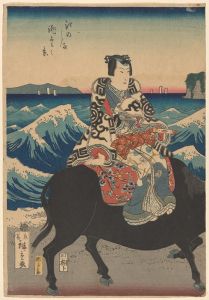


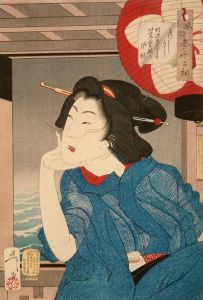


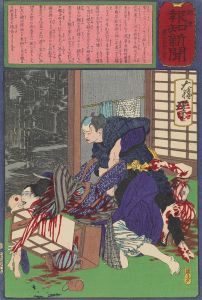
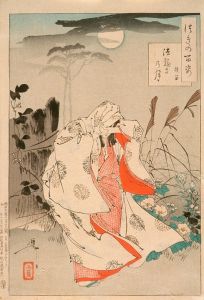
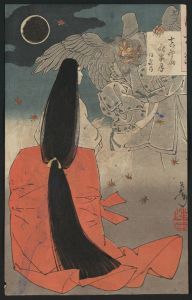
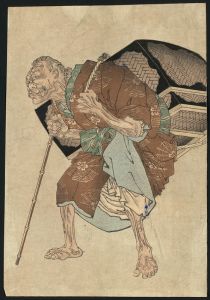
![Musha]taira no tomomori](/imgs/225657/s/tsukioka-yoshitoshi-mushataira-no-tomomori-bb591b96.jpg)
